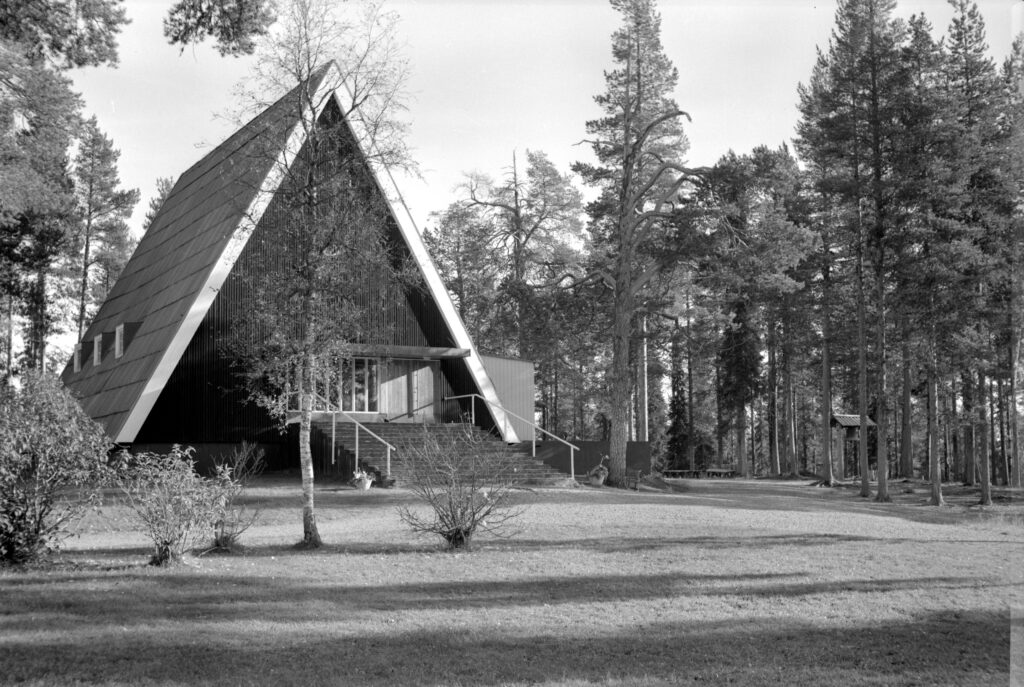After Finland became independent, concern was raised about the material and spiritual well-being of the population on the eastern border. In 1924, the Finnish government created a border region program on the mandate of the parliament to improve the management of these remote areas. The goal of the work was to develop the self-reliance and patriotic spirit of the residents of the border region. In addition to the government and ideological border associations, the church also participated in the border region work. Kuusamo became the first parish in Finland to start ecclesiastical cross-border work with its regions and priests.
At first, it was proposed to establish a new congregation. It would have included the areas of Kuolajärvi (Salla) and Kuusamo. The territory of these parishes was almost twice the size of Uusimaa county and only three priests worked in them. It was also brought up that Paanajärvi had an unstable social situation due to communist agitation. The goal was that the state would have taken responsibility for the hiring costs of the priests. When the Diocese of Oulu inquired about the matter from the Kuusamo parish, the reception was very positive. The church meeting proposed Paanajärvi, Liikasenvaara, Suorajärvi, Vuotunki, Kuntijärvi, Vatajärvi, Tavajärvi and Välijärvi from the Kuusamo parish and Sovajärvi and Tuutikylä from Kuolajärvi to the area. Paanajärvi was presented as the centre of the area.
In 1931, the church decided to place a border priest in the village of Paanajärvi, and the Ministry of Education decided in the initial stage on the financing of salary costs for five years. Pastor Toivo Laitinen started working in Paanajärvi in September 1931. The Ministry of Education defined a border district that was 100 kilometres long and 50 kilometres wide. It included three kinkeri districts from the Kuusamo parish: Paanajärvi, Tavajärvi and Vuotunki, including the houses of Suoraniemi and Ervasti from the kinkeri district of Alakitka. The villages of Tuutijärvi and Sovajärvi were counted from Kuolajärvi to the border district.
In 1934, funds were started to be collected to build a church in Paanajärvi. Metsähallitus donated 200 logs, which the villagers gathered and sawed together with the priest. After Toivo Laitinen moved to become the vicar of Puolanka in 1935, his brother Olavi Laitinen became the border region priest. The actual construction began in the summer of 1936. The project was mainly carried out as labour work by the villagers. In 1937, one Sunday offertory was collected throughout Finland for the Paanajärvi church. The church was inaugurated on September 9th, 1937.
The Paanajärvi area, including its church, was destroyed in the Winter War of 1939, and the entire Paanajärvi area was lost once and for all when the Continuation War ended. However, the border region work continued after the wars. A new border region centre came to Käylä. A new border region church was also built there, which was inaugurated on December 14th, 1958. Murtovaara border district was formed in the area of Poussu and Lämsä villages in Southern Kuusamo.
The ecclesiastical activities of the border districts included the organization of church services and ceremonies. As one valuable part of Kuusamo’s border region work, the border region sisters worked in the field of health care and diaconia.
The cross-border work in the parishes ended at the end of 2002, and the activities became the responsibility of the respective parishes.
